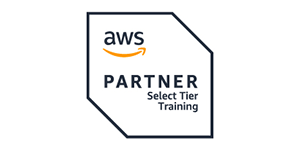Type
Virtual
Classroom ILT
Skill Level
Available dates
Learning Path
Virtual
Duration
1 Day

TYPE
Virtual
Classroom ILT
LEARNING PATH
SKILL LEVEL
DURATION
AVAILABLE DATES
Choose date
R16 900,00
Price excluding VAT
Introduction
Cloud Operations on AWS is designed to teach those in a Systems Administrator or Developer Operations (DevOps) role how to create automatable and repeatable deployments of networks and systems on the AWS platform. The course covers the specific AWS features and tools related to configuration and deployment, as well as common techniques used throughout the industry for configuring and deploying systems.
Audience profile
This course is intended primarily for:
- System Administrators
- Cloud Administrators
- Software Developers, especially those in a Developer Operations (DevOps) role
Pre-requisites
It is recommend that attendees of this course have:
- Attended the AWS Technical Essentials course
- Background in either software development or systems administration
- Some experience with maintaining operating systems at the command line (shell scripting in Linux environments, cmd or PowerShell in Windows)
- Basic knowledge of networking protocols (TCP/IP, HTTP)
Course objectives
This course is designed to teach you how to:
- Use standard AWS infrastructure features such as Amazon Virtual Private Cloud (VPC), Amazon Elastic Compute Cloud (EC2), Elastic Load Balancing, and Auto Scaling from the command line
- Use AWS CloudFormation and other automation technologies to produce stacks of AWS resources that can be deployed in an automated, repeatable fashion
- Build functioning virtual private networks with Amazon VPC from the ground up using the AWS Management Console
- Deploy Amazon EC2 instances using command line calls and troubleshoot the most common problems with instances
- Monitor the health of Amazon EC2 instances and other AWS services
- Manage user identity, AWS permissions, and security in the cloud
- Manage resource consumption in an AWS account using tools such as Amazon CloudWatch, tagging, and Trusted Advisor
- Select and implement the best strategy for creating reusable Amazon EC2 instances
- Configure a set of Amazon EC2 instances that launch behind a load balancer, with the system scaling up and down in response to demand
- Edit and troubleshoot a basic AWS CloudFormation stack definition
Course content
| Sesison 1: Course Introduction | |
|
|
|
|
| Session 2: Day 1 | |
|
|
|
|
| Session 3: Day 2 | |
|
|
|
|
| Session 4: Day 3 | |
|
|
|
|
| Module 1: Introduction to data lakes | |
|
|
|
|
| Module 2: Data ingestion, cataloguing, and preparation | |
|
|
|
|
| Module 3: Data processing and analytics | |
|
|
|
|
| Module 4: Building a data lake with AWS Lake Formation | |
|
|
|
|
| Module 5: Additional Lake Formation configurations | |
|
|
|
|
|
|
| Module 6: Architecture and course review | |
|
|
|
|
Associated certifications and exam
On successful completion of this course students will receive a Torque IT attendance certificate.
The AWS Certified SysOps Administrator – Associate exam validates technical expertise in deployment, management, and operations on the AWS platform. Exam concepts you should understand for this exam include:
Deploying, managing, and operating scalable, highly available, and fault tolerant systems on AWS
Migrating an existing on-premises application to AWS
Implementing and controlling the flow of data to and from AWS
Selecting the appropriate AWS service based on compute, data, or security requirements
Identifying appropriate use of AWS operational best practices
Estimating AWS usage costs and identifying operational cost control mechanisms

Amazon Web Services (AWS) are leaders in cloud computing solutions and provide IT infrastructure in the form of online web services.
Torque IT is the first and only Authorized AWS Training Partner in Africa.
Our authorized AWS training solutions, and associated certifications, develop and validate the technical knowledge and skills that are relevant to individuals and organizations that are considering, implementing and maintaining cloud-based solutions.
Our hands-on AWS training courses are for anyone who wants to gain a deeper level of understanding with regard to cloud computing solutions and AWS. AWS Certifications designate individuals who demonstrate knowledge, skills and proficiency with AWS services. AWS Certification exams validate the technical knowledge and skills necessary for building and maintaining applications and services on the AWS Cloud.
Regardless of your level of experience with cloud computing, and AWS, we have a course for you.

